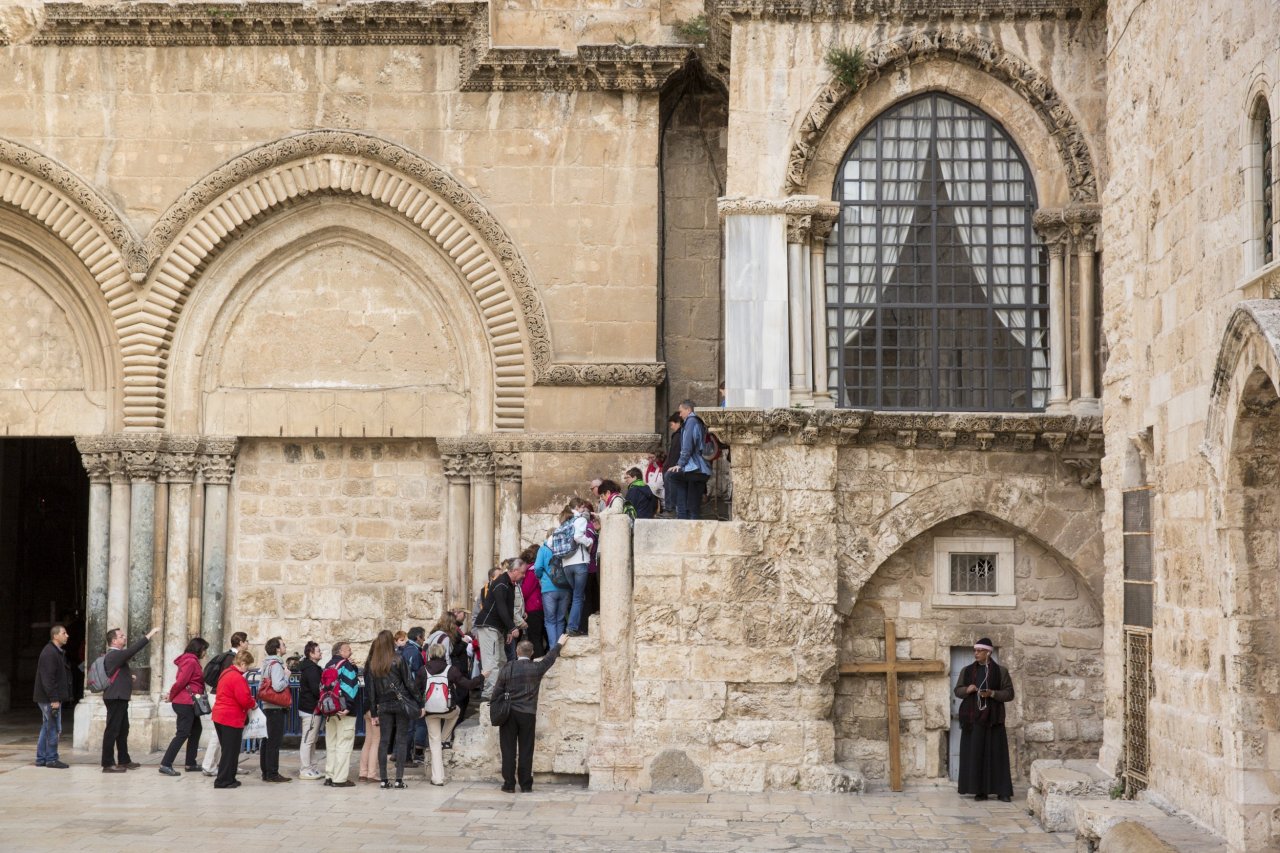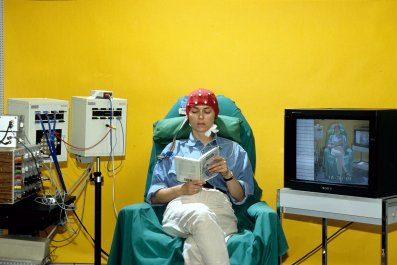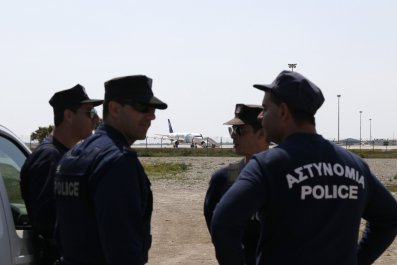Updated | In 2011, U.S. Customs officials in Memphis, Tennessee, intercepted a suspiciously labeled FedEx package sent by an Israeli antiquities dealer to the compound of a wealthy biblical antiquities collector in Oklahoma City. The FedEx bill identified the contents as "hand-crafted clay tiles" worth less than $300, but when agents opened it, instead of kitchen decor they found 300 clay tablets scored with tiny ancient writing—Assyrian and Babylonian cuneiform tablets of the type that have been looted on a grand scale from war-ravaged Iraq in recent decades.
A few years later, around Easter 2014, on the other side of the world, an Italian scholar was touring the Vatican's Verbum Domini II exhibit of antique Bibles and Bible-related artifacts. The collection was rich with treasures, from Dead Sea Scroll fragments, to priceless medieval texts, to the first "lunar Bible" (the book American astronaut Edgar D. Mitchell carried to the surface of the moon in 1971). Among the vitrines, the scholar's eye fell upon a ragged bit of a sixth-century papyrus fragment containing lines from Galatians 2 in Coptic. The scholar, an expert in papyrus, recognized it as one that had been on sale on eBay from an anonymous Turkish seller several years before. In email exchanges with academics pretending to be interested buyers, the seller had left the impression that he was "dodgy." Dealers who worked with him believed he was a smuggler.
Both the misidentified cuneiform shipment, which sparked a federal investigation, and the smuggled papyrus belong to Steve Green, a billionaire evangelical. Under Green's leadership, his family has reportedly spent $800 million rapidly amassing their collection of ancient artifacts and building a Museum of the Bible in Washington, D.C., to house it. The eight-story, 430,000-square-foot building slated to open next year is three blocks from the U.S. Capitol and two blocks from the Smithsonian museums. It will be one of the largest museums in the nation's capital and will reportedly have a two-story zinc and glass ark on top. This project is audacious, but it's only a small part of Green's master plan to "restore" the Bible to its rightful place—as he sees it—in the center of American life and government.
And he's got the money to get his way. Green's fortune derives from his family's crafts chain, Hobby Lobby, a retail giant that earned $3.7 billion in income last year. The Greens are the Koch brothers of the evangelical movement and have spent hundreds of millions to blur the line between church and state. They fought a "religious freedom" case all the way to the U.S. Supreme Court, winning a 2014 ruling that allows businesses to refuse to cover contraception for women, as required per the Affordable Care Act. They also bankrolled a controversial Bible curriculum for American public schools (not yet approved) and poured a fortune into fundamentalist Christian colleges and institutions here and abroad. And now the family is prepared to spend big to make America a truly Christian nation again. Their kind of Christian.

And that worries some folks. "There is no such thing as 'the' Bible," says John Kutsko, executive director of the Society for Biblical Literature, a global organization of scholars who study and read ancient works that influenced or became part of the Bible. He and many others fear that Green's museum will present a narrow, evangelical version of the Bible and its role in American society, one that ignores versions of the text used by Jews, Muslims and the many Christians of other creeds.
"We are a melting pot, and there are many religions here," Kutsko says. "The museum could be a showcase for how we and our texts are different and can coexist peacefully. That would be a wonderful message to bring to bear, particularly in the environment we live in, an environment of absolutists and polarization."
Scholars also have a larger concern: the truth. They know too well that "biblical archaeology" is rife with amateurs desperate to prove the people and stories in the Bible are historically accurate, with many grand claims but little proof. Academics are also troubled by the résumé of the man hired to run the Bible museum; he used to head the Creation Museum, which states as fact that the Earth was created just 6,000 years ago and that humans were around when dinosaurs ruled the planet.
Also troubling is how the museum handles much more recent history. A fundraising video for the museum shared with Newsweek declares that the Founding Fathers intended the Bible to be the center of American government and culture and opens with a spurious quote from George Washington: "It is impossible to rightly govern the world without God and the Bible." The nation's first president never said that, but Green insists the Bible was central to the creation of the United States and is now imperiled. In an interview at the Vatican in 2014, he declared, "The fact of the matter is, the book is under assault today."
The Bible museum is his way of defending "the Good Book," and he knows there's more than one way to fight a holy war.
'Rapture-Ready'
As Christian collectors seeking objects that put facts behind their faith, the Greens join a long tradition of pseudo-archaeologists, tourists and businessmen who have labored to prove the Bible is as factual an account of history as Herodotus. The seamy and saintly business of biblical relic collecting dates back to the fourth century, when Helena of Constantine came to Jerusalem looking for pieces of the True Cross. For the next millennium or so, Europeans filled reliquaries with loot and forgeries from the Holy Land, including the alleged bones and other bits of the apostles, and even the Virgin Mary's wedding ring. In the 19th century, Victorian pastors, armed with spades in one hand and Bibles in the other, flocked to the Middle East.
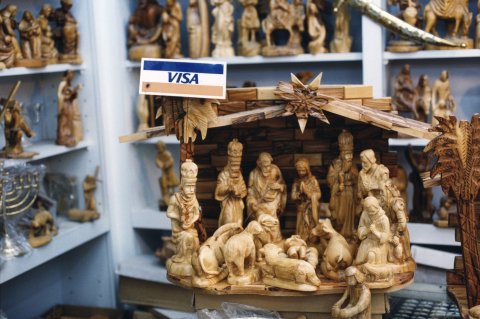
The private biblical antiquities trade that stocked the vitrines of the Museum of the Bible begins in the ground beneath some of the most violently disputed turf on Earth. To the untrained eye, major archaeological sites in the Middle East resemble low hills dotting a flat landscape, but these "tels" are not natural geological formations; they are layers upon layers of ancient broken pottery and ruined walls that reveal what human life in the region was like thousands of years ago. At many of these archaeological digs, science coexists uneasily with fable. For religious believers, these sites and all that lies beneath are much more than just a scientific record, and the emotion attached to these sites is so strong that some visitors fall to their knees in awe and prayer. Some have had breakdowns, and Jerusalem syndrome, a condition involving delusions, obsessive ideas and psychosis that requires hospitalization, is covered in medical texts.
A popular stop on the Holy Land tourist trek is Tel Megiddo, or, as it is known in the Bible, Armageddon. Megiddo is a hill in northern Israel containing eight layers of human habitation predating biblical times. It was razed and resettled time and again because of its prime location overlooking the fertile Jezreel Valley, near a spring. Its history is indeed bloody, and according to the Bible, its future could be as well. It was roughly the halfway point between the Babylonians to the north and the Egyptians to the south, and armies often clashed here. Scholars believe this savage history inspired the writers of the Old Testament to place Armageddon in the Book of Revelations as the setting for the war to end all wars on Judgment Day.
During the summer months at Tel Megiddo, sweating archaeologists squat in dirt, marking out layers of history inch by inch with pieces of string and wooden stakes. Meanwhile, in the parking lot below, buses pull up by the dozen, filled with Christian tourists led by religious tour guides, who clamber up the side of the site, find a shady spot under a tree and preach about Armageddon. Among the American pastors who have held forth on the site of the End of Days is "Rapture-Ready" Gary Frazier of Texas-based Discovery Missions. Frazier has led Holy Land tours up the tel and preached that the Book of Revelations predicts blood will flood the valley around Armageddon "up to the horse bridles" and "by the space of a thousand and six furlongs."
Evangelicals take that literally. "Can you imagine this entire valley filled with blood?" Frazier would say. "That would be a 200-mile-long river of blood, 4½ feet deep. We've done the math. That's the blood of as many as 2½ billion people."
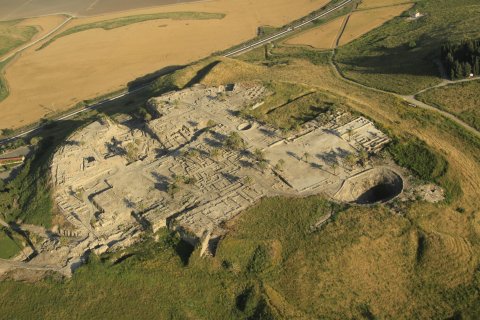
Biblical archaeology has attracted countless self-styled Christian Indiana Joneses. Bankrolled by church collection plates and sometimes TV producers, they have hunted for, and claimed to have found, Noah's Ark, Christ's tomb and the Ark of the Covenant, among other holy relics. A Texan named Vendyl Jones, who arrived in Israel in the 1970s, remade himself into a conservative, bearded Orthodox Jew; bought a Cadillac with four-wheel drive; and excavated on and off for several decades, turning up, among other things, a substance he claimed was burnt incense from the Second Temple. Scientists scoffed.
The late Ron Wyatt, a Tennessee nurse-anesthetist who took to digging in Israel, claimed to have found the Ark of the Covenant and once announced that he had found the blood of Jesus. Wyatt said he knew it was Christ's blood because he had commissioned a DNA study. Normal human blood contains 46 chromosomes—23 from Mom and 23 from Dad—but according to Wyatt, the substance he found in an "earthquake crack" beneath Christ's crucifixion site in Jerusalem had only 24 chromosomes, that is, Mary's 23, plus one—God's.
The yearning for proof is so strong that fresh discoveries regularly make the news before scholars have examined them or confirmed their authenticity and concurred on a biblical interpretation. In recent years, the most famous of these objects, the so-called James Ossuary, was announced at a Washington, D.C., press conference in 2002 as the first archaeological evidence of Christ. It has since been debunked as one of the top 10 scientific hoaxes in history. (My book Unholy Business [Collins 2009] details the Israeli investigation and forgery trial that ensued.)
The Flimflam Man's Pink Martinis
The Green family commenced collecting at a propitious moment. Besides the economic meltdown of 2008, which was forcing some wealthy collectors to unload their treasures, the American wars in Iraq—home to 10,000 Babylonian, Sumerian and Assyrian sites, some dating back as far as 4,000 B.C.—exponentially increased the amount of looted "conflict antiquities" in the market. After the Gulf War and, 12 years later, the fall of Baghdad, an era of "industrial-scale" looting in Iraq commenced. The chaos of the Arab Spring and the rise of the Islamic State militant group (ISIS) opened yet another gusher of pillaged loot into the market.
The men the Greens chose as their buyers were straight out of Bible archaeology's seedy-saintly central casting. "We have over 1,000 Torahs," crowed the late Johnny Shipman, a Dallas rare book dealer, speaking to The New York Times in 2010. Shipman, who took credit for the idea of a Green-funded Bible museum, was a short, stout son of a pastor who packed a sidearm. He was an unusual choice for the censorious, teetotaling Greens, as he was known to quaff several pink martinis with his meals. One fellow rare book dealer described him as "a bit of a flimflam man, who looked like a used car salesman, a Texan with a little charm."
After Green agreed to send Shipman forth to collect for a national Bible museum, Shipman brought in a professor named Scott Carroll, who had also encouraged the Greens to fund such a museum. Carroll left his job teaching ancient history at a Christ-based liberal arts college, Cornerstone University in Michigan, to help Shipman start collecting, and the two men starting flinging cash into the air. In 2010, a reporter for the Dallas Observer told Carroll he had heard that he and Shipman had spent upward of $10 million in Europe on rare Bibles. Carroll e-mailed back within hours: "I can assure you that the estimate about our recent acquisitions would be a gross understatement!" The Observer then reported that Carroll and Shipman were spending "more in the neighborhood of $300 million."
In a later interview, Carroll bragged that the material he was collecting was so sensational it would soon be "front-page news" and would prove the factuality of the Bible. "Maybe a lot of people know about the scientific evidence that supports the Bible," he said. "But they certainly don't know the mountains of evidence that we're sitting on. There is even more evidence, more to be recovered, more to be found, that increasingly encourages our faith."
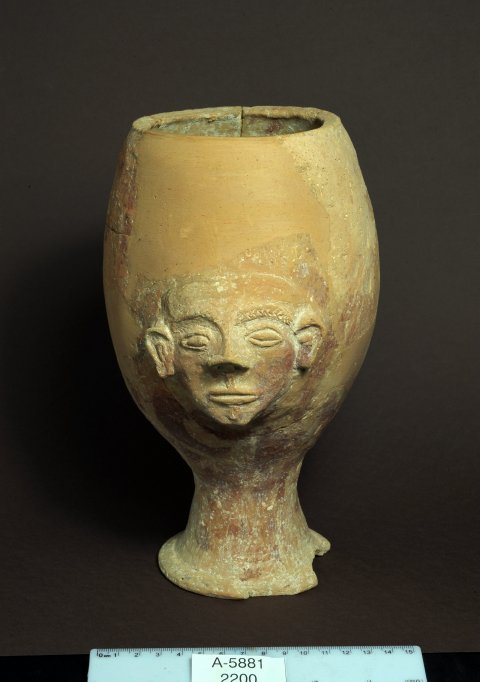
Carroll eventually earned the scorn of mainstream classics scholars, who nicknamed him "Palmolive Indiana Jones" after a YouTube video showed him encouraging students to use the common household detergents Palmolive or Dawn to take apart Egyptian mummy masks. The ancient masks, made of recycled papyrus in the early Christian era, sometimes contain fragments of text that Carroll and other confessional scholars define as Bible-related material.
An evangelical writer in this field, Josh McDowell, scoffed at the scholars alarmed by the destruction of the masks and explicitly connected the process to a religious experience: "These biblical manuscript fragments will be used of God to bring many young people to Christ.... Pray with me that these discoveries will be blessed of God to bring people to Christ."
Kowtowing to Bibi
Destroying mummy masks to "bring young people to Christ" is one example of how evangelical archaeologists and collectors like the Greens pervert the heritage of Middle Eastern countries like Egypt and Iraq to manufacture proof of the Bible's factuality. The true origins of the Bible lie in the mists of indigenous Mesopotamian civilizations that existed thousands of years before the sixth-century B.C. authors of the Bible. There is no evidence the Museum of the Bible will depict the diversity of Middle Eastern cultures or the ancient religions, many of whose religious (pagan) stories are repurposed in the Bible.
The museum will contain Egyptian, Iraqi and Syrian artifacts, but the ground zero of biblical relic collecting is Israel, where archaeology is a matter of intense religious and political importance. And the Greens and their museum have been most active there, supporting a larger religious nationalist endeavor with warm bodies and cold cash. Israeli theocrats base vast and controversial land claims on biblical descriptions of ancient borders. American evangelical Christians support those claims because they believe that only when Israel is restored to its biblical borders will Christ return to earth.
Christian Zionism—religiously based evangelical support for Israel—has become so central to politically engaged American evangelicals that almost every candidate for the GOP presidential nomination has explicitly stated that on "Day One" in the Oval Office, he or she will call Israeli Prime Minister Benjamin Netanyahu.
The Greens are heavily invested in this campaign. Through the Museum of the Bible they finance Covenant Journey, a program to send Christian youth on tours to Israel, similar to those long offered gratis by the Jewish Federations of North America to young American Jews as "birthright" journeys. According to the Forward, young Christian participants in an early Covenant Journey trip "were transformed into enthusiastic pro-Israel advocacy messengers." A student who spoke to the Forward, Erica Tomlin, a sophomore at Liberty University (the Lynchburg, Virginia, school founded by the late Reverend Jerry Falwell), said of the trip, "It changed my career path. Now I want to work on advocating for Israel."
One of the project's main early funders was Paul Singer, a Jewish hedge fund billionaire as well as one of the largest donors to Republican politics. Covenant Journey was founded by the Liberty Counsel, which is classified by the Southern Poverty Law Center as a hate group for statements about homosexuality.
Wink-Wink, Nod-Nod
All Christian tours to Israel include visits to some of Israel's 30,000 archaeological sites. Those sites are managed by a tiny, underfunded cadre of scholar-investigators in the Israel Antiquities Authority (IAA). The agents carry guns, arrest looters and ferret out fakes, but most agree they cannot adequately police the antiquities trade. And in fact, one of the greatest illicit biblical antiquities collections ever amassed was owned by an Israeli who routinely thumbed his nose at the agents and their regulations.

Before the Greens came along, the greatest collection of biblical archaeology was owned by the late Israeli billionaire Shlomo Moussaieff. The collector, who officially made his fortune dealing diamonds and selling jewelry, operated out of Tel Aviv and London. By the time of his death, in 2015, he had stored some 60,000 objects, almost none from a legal site, in a Swiss freeport. In a court case near the end of his life, he ridiculed the notion that cops or customs agents could regulate his passion.
Moussaieff was not alone in acting with impunity when it came to collecting. One of Israel's greatest heroes, General Moshe Dayan, habitually helped himself to ancient stone carvings, pottery and other archaeological treasures during his lifetime. Both men's collections ended up at the IAA. Last summer, the Bible museum "inked a major new long-term alliance" with the IAA, agreeing to devote a floor in the museum to some of the IAA's millions of antiquities.
The U.S. Department of Justice did not respond to questions about the reported investigation of trafficking in stolen treasures by Green's Bible museum. But the museum's president, Cary Summers, admitted to biblical scholars Joel Baden and Candida Moss, who first wrote about it last year, that the federal government was looking into that FedEx'd cuneiform shipment. According to Baden and Moss, Summers attributed it to "incomplete paperwork," while Green conceded "it's possible" some illicit artifacts are in the collection.
Scholars sent tips about the smuggled papyrus in the Green collection to American law enforcement officials, but there is no official confirmation that those tips are being investigated. Almost five years have passed since the reported seizure by the Memphis customs officers of the FedEx'd cuneiform. A law enforcement source familiar with the prosecution of other antiquities cases says the federal government often tends to settle such cases with a "wink-wink, nod-nod handshake, a give us the stuff and we won't prosecute." That is "infinitely easier" than the years, money and manpower it takes to build a successful case involving freshly looted material that crosses international borders, the source says.
A spokeswoman for the museum referred questions about the collecting practices to the Green family. Their spokeswoman said they "respectfully decline participation" in response to Newsweek's questions about their collection and the federal investigation.
Lynda Albertson, head of the Rome-based Association for Research Into Crimes Against Art, has monitored the museum's rapid development and says the shortage of legal antiquities on the market means the Greens' vast and rapidly built collection could not have been properly vetted. "Did they buy what they could get their hands on because they are ignorant? You could say they are wealthy people who don't understand anything about collection management. But when you see the [U.S.] investigation into the FedEx'd cuneiform, then it starts looking a little less like bumbling."
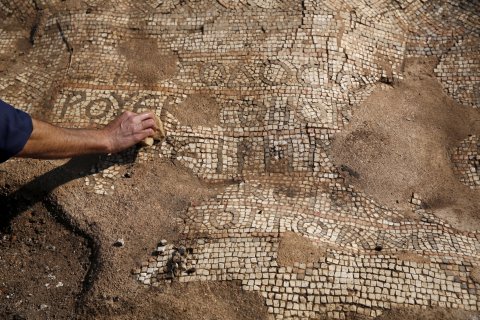
It Came From Grandma's Attic!
In 1970, most nations signed on to a UNESCO agreement prohibiting the illicit trade in cultural heritage (although Israel did not sign it). With that agreement in place and nations moving to get their cultural heritage repatriated—and with Western law enforcement on the lookout for ISIS-related loot—antiquities dealers have become more stealthy. Before a private collector can donate a dubiously discovered black market ancient object to a museum, it must be laundered and given a proper provenance. One way that's done is to insert an illicit piece into a collection at one of the big auction houses, such as Christie's or Sotheby's. The allegedly smuggled papyrus that the Greens purchased had been sold as part of a lot at a Christie's auction in 2011.
To make an object truly kosher, though, scholars must be involved. Many museums will no longer even consider accepting an object until it has been published—that is, written about in a scholarly journal.
That may explain why the Greens created the Scholars Initiative, which funds young, aspiring archaeologists and students; pairs them with mentors; and gives them access to the Green Collection—hands-on experience with antiquities that most students cannot get. The Scholars Initiative has already involved hundreds of young students and mentors, some of whom are studying and writing about materials in the museum's collection. Conventional scholars have been criticizing their rigor, pointing out misidentified archaeological sites on the museum's Facebook page.
Dead Sea Scrolls scholar Michael Langlois, who is on the Near East studies faculty at the University of Strasbourg in France, contacted the museum to report what he believed was a forgery in its collection and asked to inspect it. "I was told that Green is not interested in finding out whether his scrolls are genuine or not," Langlois says. A spokesman for the Museum denied this.
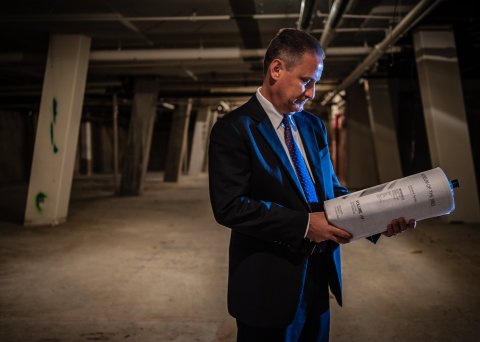
"Essentially, the Green Scholars Initiative was designed to lend scholarly credibility to a collection of artifacts that have spurious origins, including the black market, unprovenanced items, items from long-held private collections, potentially looted objects and inappropriately acquired goods," says Robert Cargill, an archaeologist and Department of Religious Studies professor at the University of Iowa. "The Green Scholars Initiative was designed to paper over the evangelical, apologetic goals of Steve Green, who is ultimately seeking to prove the reliability of the text of the Bible, and distract from the problematic origin of his collection."
He is doing that, Cargill says, by employing relatively inexperienced scholars, usually from Christian colleges, "to research and publish his objects with the hope of establishing a scholarly history to each of them."
Cargill notes, though, that few of his colleagues would turn down an offer from the wealthy collector, because they have no money to travel and no access to antiquities, regardless of their provenance. "I have multiple colleagues working for or with the Green initiative, against my numerous protestations," he says.
Michael Danti, academic director of the Cultural Heritage Initiatives of the American Schools of Oriental Research, one of the largest associations of archaeologists working in the Middle East, says scholars who work with and authenticate unprovenanced material are complicit in the looting and black market trading of antiquities. "Somebody has to turn a blind eye to the dubious nature of this material and be willing to take somebody's dollar when they say, 'Oh, I found it in my great uncle's suitcase under his bed' or 'I didn't know grandma had that in her attic.'"
Metro Stations of the Cross
Evangelicals have been an increasingly potent force in Republican politics in the last few decades, but in gay-marriage America they now feel marginalized, even besieged. Evangelicals have been key foot soldiers in 2016 GOP campaigns, as well as a crucial demographic for the winners. Although the Green family's Museum of the Bible was privately conceived and funded, it is also has an implicitly (and often explicitly) political mission: On donor websites its supporters discuss their hopes that it will influence policymakers in the heart of the nation's capital.
And why stop there? Steve Green isn't content to merely invite guests to his fun house of worship. He wants to give the residents of D.C. and its millions of visitors a subliminal sermon on their morning commute. The museum is trying to transform the nearby Metro station, Federal Center SW, into an audiovisual biblical baptism. "The brilliant digital display," the project's fundraising website states, "will engulf people" as they make a one-minute platform walk and escalator ride to the exit. The display will "serve as a rallying point for Christian philanthropic and thought leaders to gather, pursuing with strategic intentionality the goal we all share: No Place Left."
After Newsweek asked what "No Place Left" meant, that phrase and other explicit language about bringing millions of people to faith through the Metro stop were removed from the website. A spokeswoman for the project referred questions to the museum, which would only confirm that the project is going forward. But the D.C. Metro Board of Directors has not approved the exhibit, according to a spokesman. Alex Luchenitser, associate legal director at Americans United for Separation of Church and State, says decorating the Metro stop as a biblical infomercial would be un-American. " If the Metro Board is going to be dedicating a significant portion of the Metro stop to promoting this museum, that would be a serious violation of the U.S. Constitution," he says.
Some might also worry about the separation of fact and fable. Starting late next year, millions of visitors will enter the cavernous, air-conditioned confines of the Museum of the Bible and be dazzled by the slick, multi-platform displays and the vast array of antiquities (never mind how they were acquired). Experiencing all this in the shadow of the vaunted Smithsonian museums, visitors might reasonably assume they were viewing a rigorously researched panorama of ancient history. Few if any will realize it was merely an extremely expensive, high-tech version of an evangelical's Oklahoma City Sunday school lesson, transported to the nation's capital with all its culturally provincial and exclusionary values intact, along with its anti-science propaganda and benighted notions of American exceptionalism presented as gospel.
For further context on Biblical era collections, read Nina Burleigh's book, Unholy Business: A True Tale of Faith, Greed and Forgery in the Holy Land.
Correction: This article has been updated to clarify that the seller had left a dodgy impression in email exchanges with academics pretending to be interested buyers. The scholar was not the one who recalled that the seller was a smuggler.


